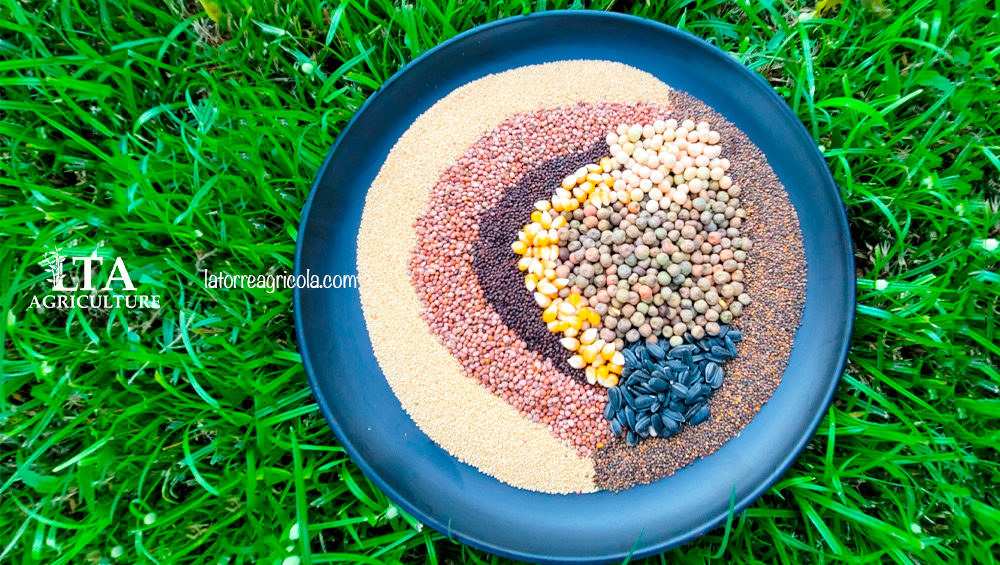List of most popular Seeds to grow Microgreens: Green Sorrel, Red Sorrel, Cinnamon Basil, Lemon Basil, Thai Basil, Alfalfa, Garlic, Red Amaranth, Braid Broccoli, Calabrese Broccoli, Onion, Cilantro, Kale, Kohlrabi, Spinach, Black Chickpea, Sunflower, Peas, Green Lentil, Red Lentil, Corn, Green Mizuna, Red Mizuna, White Mustard, Red Mustard, Pak Choi, Parsley, Perilla or Shisho, Leek, Rose Radish, Daikon Radish, Sango Radish, Rambo Radish, Yellow Beet , Red Beet, Arugula, Tatsoi, Thyme, Red Clover, Wheat, Buckwheat and Carrot.
There is an extensive list of seeds to grow Microgreens, however it is recommended to always use 100% organic chemical-free seeds (GMO-Free).
Microplants can be grown in various places such as: In your house with pots next to your window, Outdoors or also in Greenhouses that contain ample space. In fact, it is recommended that the cultivation area be in warm zones or temperate zones in order to guarantee harvests 365 days a year.
In cold areas it is almost impossible to grow Microgreens, especially in winter as they need at least four hours a day of direct sunlight.
In addition, they are divided into the following plant families where we mention some of the most popular Seeds to grow Microgreens:
- Amaranthaceae: Chard, Amaranth, Spinach, Quinoa and Beetroot.
- Amaryllidaceae: Garlic, Onion and Leek.
- Apiaceae: Celery, Dill, Fennel and Carrot.
- Asteraceae: Chicory, Endive, Sunflower and Lettuce.
- Brassicaceae: Watercress, Broccoli, Cauliflower, Radish, Cabbage and Arugula.
- Cucurbitaceae: Pumpkin, Melon, Cucumber and Watermelon.
In The Micro-vegetables we also grow seeds such as:
- Legumes: Beans, Chickpeas and Lentils.
- Cereals: Rice, Oats, Barley, Corn and Wheat.
Most popular seeds to grow Microgreens for beginners.
- Cabbage Kale: It is a Microvegetable with green leaves, soft texture and is tasty. It contains nutrients such as: Amino acids, Antioxidants, Calcium, Fiber, Lutein, Omega 3, Omega 18, Proteins, Vitamins A, C and K, among other benefits for the organism.
- Mustard: It is a Microvegetable with green and purple leaves in the shape of a heart, with a spicy flavor. It is also rich in nutrients such as: Calcium, Carotenoids, Phosphorus, Iron, Potassium, Magnesium, Tocopherols and Zinc.
- Radish: It is a Microvegetable with green leaves, an intense spicy flavor and slightly floral. In addition, they contain many health benefits due to their high concentration of nutrients such as: Pantothenic Acid, Beta Carotene, Calcium, Folate, Phosphorus, Iron, Magnesium, Potassium, Zinc and Vitamins A, B3, B6, C, E, K.
All these seeds belong to the Brassicaceae Family as well as Watercress, Broccoli, Cabbage, Brucella Cabbage, Cauliflower, Cabbage and Arugula.
Grades:
The Microplants have a concentrated and strong flavor, from pungent, neutral, slightly acid to bitter.
The Micro-vegetables that have a mild flavor are: Chard, Alfalfa, Borage, Broccoli, Kale, Carrot.
The Micro-vegetables that have a spicy flavor are: Watercress, Mustard, Radish and Arugula.
On the other hand, the plants of the Solanaceae family cannot be cultivated as Microgreens due to their high toxicity and these are: Eggplants, Potatoes, Tomatoes and Peppers (Habaneros, Jalapeños, Bell Peppers).





2 Comments
Great post. I am experiencing many of these issues as well..
Thanks for your feedback, if you need any help don’t hesitate to contact us.